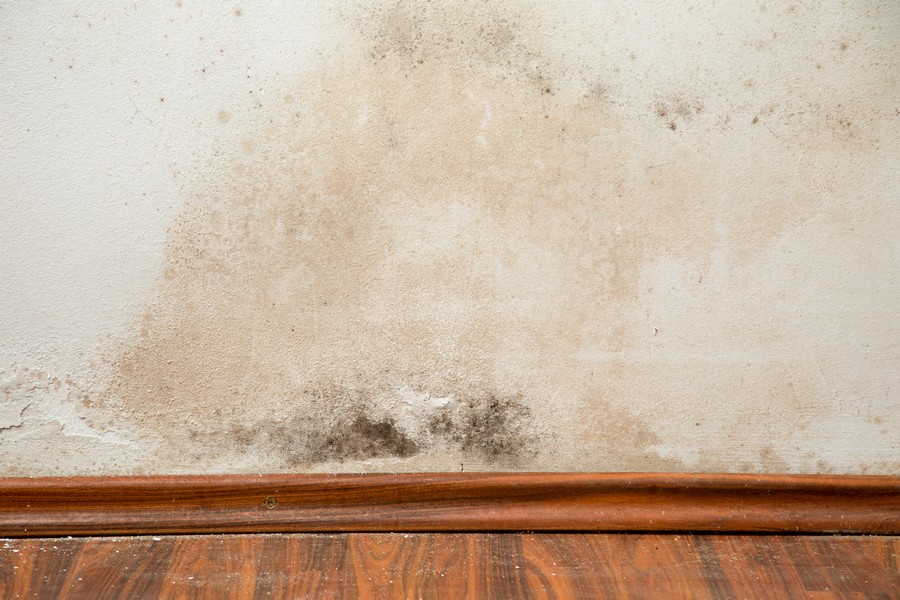What is Rising Damp? It’s a term used to describe moisture that rises up through walls and floors, resulting in the presence of damp patches. This phenomenon typically occurs when there is a lack of adequate damp-proofing or sealant between an external wall and the ground. In some cases, it can lead to structural damage as well as health hazards such as mold growth. The best way to prevent rising damp is by installing an effective damp-proof course (DPC) at least 1 metre above ground level. If you have already experienced this issue, then there are numerous treatments available which will help reduce the effects of rising damp.
Rising damp is a significant and commonly misconstrued issue that affects residences across the UK. This article explains the root causes, as well as how to identify visible signs of such on base level surfaces – walls, skirting boards, paintwork, wallpaper and brickwork.
Confirmed cases of rising damp typically necessitate the installation of a remedial damp proof course to prevent an uncomfortable and humid atmosphere in your house. If moisture is permitted to build-up in walls, it may reach the timber, potentially leading to wet or dry rot. To detect signs of rising damp and learn how to fix it, please continue reading our tips from Brighton Damp Treatments experts or arrange for a survey.
What is Rising Damp?
Rising damp is an infrequent form of moisture that influences the walls of a building. Through capillary action, groundwater is drawn up through tiny channels in the bricks like straws, bringing salts with it as well.
Other permeable construction materials, such as plaster and timbers in floorboards, joists and skirting boards, are situated around the damaged wall. These can quickly absorb moisture, resulting in evidence of wet rot on the wood. For assistance with detecting and handling wet rot, please refer to our dedicated pages.
Rising damp can be identified by the damage it inflicts on a building’s interior walls. Plaster and paint deteriorate, wallpaper loosens, and tide marks appear at the point of groundwater penetration. Salts may also bloom on interior surfaces which is an indicator of increased humidity that can lead to paint and plasterwork debonding. Externally, mortar may crumble leaving white salt stains on the walls.
Causes of Rising Damp
Most structures have a damp proof course (DPC) built at the lower level of their walls to prevent water from coming in. Depending on when the property was constructed, these DPCs can be made out of non-absorbent materials such as slate, bitumen or plastic. Over time these physical DPCs may become less effective or not exist at all in older homes; meaning there is nothing stopping water from travelling up your wall if you don’t have one – or evidence that it has failed.
The DPC need not always be replaced; it can also be bridged. Yet, due to a design fault, moisture from the ground may creep up beyond the DPC.
- Take care to ensure that all items are properly labeled and stored in a secure manner.
Ensure all items are labelled correctly and stored securely. - Every effort must be made to make sure that the correct procedures have been followed, so as to avoid any problems down the line.
Make every effort to follow proper procedures, avoiding future issues. - Debris in the wall cavity or underneath the flooring could be present.
- Plaster that overlaps the damp proof course (DPC) on either the interior or exterior should be removed.
- The grade around the DPC (damp proof membrane) is raised.
- The cavity has inadequate insulation; this needs to be rectified.
Solid flooring is a reliable, long-lasting option for any interior. It maintains its shape and structure over time and requires minimal upkeep to remain in good condition. With no gaps or crevices between the boards, it provides an even surface that can be wiped down easily if spills occur. Its durability also makes it ideal for homes with children or pets as it can withstand everyday wear and tear.
Adjoining garden walls and intersecting brick structures.
Signs of Rising Damp
Recognising rising damp signs may help property owners to quickly address the problem. However, if unsure, it is best to get in touch with Brighton Damp Treatments for expert advice.
Identifying and Remedying Damp Stains and Tidemarks on Walls
Tidemarks on walls are a frequent sign of increasing dampness. Evaporation and salt migration from the ground cause them, visible starting at the bottom of the wall rising up to one metre above floor level. If tidemarks are not present, search for brown or dark yellow patches instead; these too appear between the base of the wall and one metre high.
If the damp is visible more than 1 metre up the wall, it could be due to rising damp; however, it’s more likely a penetrating damp issue. It should be noted that both forms of dampness may exist together and care must be taken when diagnosing accurately.
Investigating Possible Causes of Damp or Wet Patches on Walls
If your home has damp or moist patches on the walls, it is likely that rising damp is the cause. This would be especially true if the damp patches are only found in the lower wall sections and your property is on the ground floor. This occurs due to capillary action, which draws moisture from soil at the base of your house walls upwards through brick or stonework. If there isn’t an efficient Damp Proof Course in place at the bottom of such a wall, then rising damp will take effect. It should be noted that this phenomenon can only happen in homes where there’s no other floors above ground level.
If a floor above ground level has moisture issues, it is likely of a different nature than those on the ground floor (likely penetrating damp or excessive condensation).
The Role of Salts in Plaster
A frequent indication of rising damp is blistering or bubbling paintwork. This occurs when moisture penetrates the wall, causing the paint to separate from the surface and form bubbles.
Moisture ascends in the stonework due to capillary action. As humidity increases, salts from the soil travel into the building, spoiling plaster and ornamentation. These hygroscopic salts draw moisture from the air, causing walls to become damp on touch. The evaporation of moisture within walls brings these salts to the surface and they can sometimes be seen as a white film coating its face.
If your wall is affected by rising damp, it will also be influenced by the hygroscopic salts that generate moisture. As part of resolving this issue, these must be taken into consideration.
Deciding Between Wallpaper and Paint Peeling
Rising humidity can manifest in peeling wallpaper or paint. The increased moisture on your walls will cause the wallpaper or paint to curl away from the wall, particularly around skirting boards and at the bottom of the wall. Usually, it is immediately above the skirting board that this starts to happen first.
Peeling wallpaper or paint may suggest a condensation or penetrating damp issue in the dwelling, necessitating an accurate diagnosis to ensure that the appropriate repair specification is implemented to rectify it.
Signs of Deteriorating Plaster
If you spot flaking, bubbling plaster, crumbling plaster or powdery deposits on your ground floor walls, it could be a sign of a damp issue – in particular rising damp. Rising humidity can weaken the plaster of your wall and cause it to crumble off. This can lead to costly aesthetic damage for property owners if not handled promptly.
Skirting Boards and Rotting Flooring: What to Know
Skirting boards and floors can decay if the escalating dampness in a home is left unaddressed for an extended period. This is because excessive moisture damages the timber, allowing fungus to proliferate. Rising damp can cause rot on exposed wood. Property owners should stay away from any skirting or timbers that show signs of cracking or disintegrate easily upon contact. If wetness has caused harm over time, visible fungus may grow on skirting boards or flooring timbers.
How to Get Rid of Damp and Musty Odors
The unmistakable scent of rising damp in a property is one of the surest signs to detect. Even if there’s no visible wetness, its presence can often be detected by smell; it typically has an unpleasant, musky and moist odour. Diagnosing the kind of damp causing damage may be difficult without visual evidence however, so consulting with a specialist surveyor might be necessary. Different types of damp require different treatments therefore correct identification is key to resolving the issue quickly.
Managing Black Mould in the Home
Black mould in the lower parts of your walls is a definite sign that the area is damp. If you find this type of mould, it implies condensation; however, if it appears on the bottom half of ground floor walls, then rising or penetrating damp may be an issue and needs to be addressed.
Fasteners Made of Iron and Steel: Dealing with Rust
If left exposed to high humidity for a lengthy period, unprotected iron and steel will corrode. This could lead to weakened security as rust causes fixings such as cavity ties in the building to lose their strength, thus affecting the structural soundness of the property.
The Decline of Brick-and-Mortar Stores
Ground-floor walls can suffer from rising damp, leading to costly repairs of crumbling bricks or mortar. Fretting is the common term for this decaying masonry, identifiable by porous cement joints along external brickwork or stonework. Penetrating damp may then seep through these surfaces and further damage internal walls.
Getting Assistance for Damp Issues
Brighton Damp Treatments boasts expertise in identifying and resolving rising damp issues. We can discuss your property’s situation, and propose the optimal procedure to treat it effectively.
Let us help you with any damp issues; our technical team are readily available to provide the best solution for your property. Contact us on 01273 257 212 and we’ll be delighted to assist.



